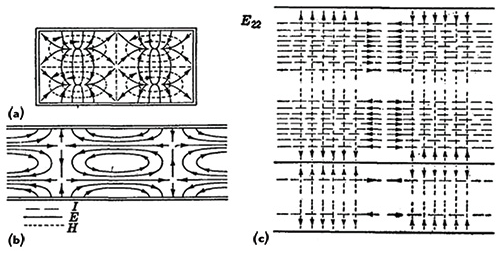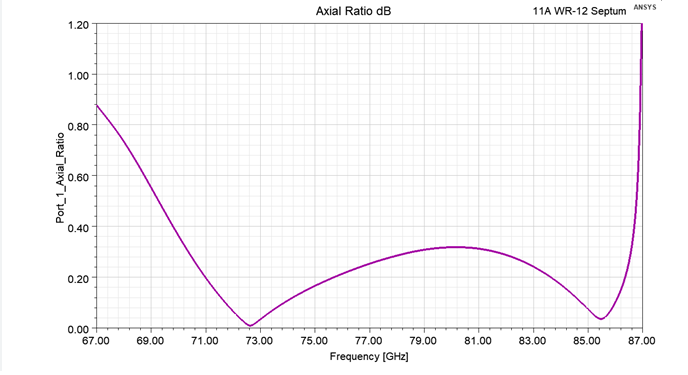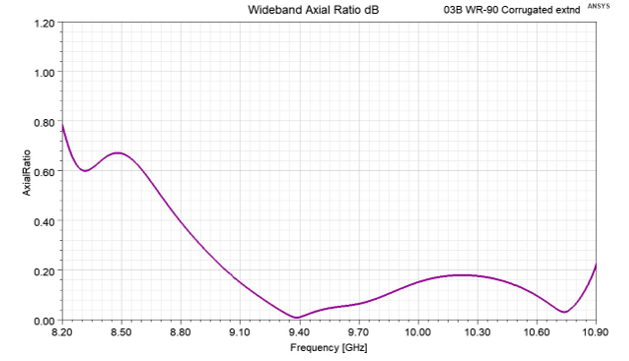Table of Contents
Waveguide Modes and Propagation
TE, TM, and TEM Modes
Transverse Electric modes in waveguides support electric fields that are entirely perpendicular to the direction of wave propagation. TE modes, notable for their lack of electric field components along the propagation direction, perform exceptionally well in minimizing dielectric losses . For example, while operating in a rectangular waveguide at 10 GHz, one would find that the TE10 mode typically emerges as the dominant mode because of its better performance characteristics. In general, this mode has a lower cutoff frequency and can handle more power.
Transverse Magnetic modes have magnetic fields pointing perpendicular to the wave’s direction of propagation . Like TE modes, TM modes do not have a magnetic field component along the direction of propagation. TM11 mode in the same waveguide might have a higher cutoff frequency than the TE modes, making it less efficient at lower frequencies. However, the mode is likely to be more useful in higher frequency precision applications.
Transverse Electromagnetic modes do not exist because they do not support waveguide propagation in structures w ith closed boundaries such as rectangular or circular cross-sections. In the world of coaxial cables or stripline implementations, TEM nodes can travel freely without any cutoff frequency, making the mode well suited to broadband applications. Overall, the TEM mode is represented by electric and magnetic fields that are both perpendicular to the direction of the waveguide propagation, indicating that the mode can manage quick broadband propagation.
Mode Dispersion and Group Velocity
Mode dispersion refers to a phenomenon in waveguides that makes different modes move at different speeds. Specifically, this effect is more pronounced in multimode fibers where higher order modes are slower. For instance, in a multimode fiber operating in 1550 nm, and the difference between the lowest and highest order modes is large, making it challenging to transmit data given pulse broadening.
Group velocity is the velocity with which the wave pulse envelope moves. The envelope moves slower than the signal, and it controls the Baseband’s passage from one point to another through the waveguide. It is also vital for studying wave propagation in waveguiding systems. The group velocity in optical fibers might range from 190,000 to 200,000 km/s because there is a refractive index in the material, resulting in a slightly slower speed than the vacuum speed of light . This index affects the phase of the signal being transmitted, thereby resulting in dispersion and limiting the capabilities of the system.

Waveguide Losses and Efficiency
Conductor Losses
The conductor losses take place as a result of the resistance of the waveguide walls to the electric current flow. Thus, they are associated with the power dissipated in the form of heat . These losses become more substantial at higher frequencies due to the skin effect. This phenomenon implies that the electric current becomes restricted to a thin layer on the surface of the conductor. In a standard copper waveguide, the conductor loss at 10 GHz reaches approximately 1 dB/m, which depends on the waveguide’s dimensions and mode of propagation. Therefore, to reduce conductor losses for high-frequency applications, it is common to choose higher-conductivity conductors, including silver, or diminish surface roughness through plating.
Dielectric Losses
The dielectric losses are produced as the dielectric material, which is used to fill or surround the waveguide, becomes polarized by the electric field. Accordingly, the energy-based losses occur as a result of heat . These losses are associated with the loss tangent of the material, which reflects the material’s inherent electromagnetic energy dissipation. For example, the dielectric loss in the hull of a fiber optic cable, which is made of a silicon glass, varies between 0.2 and 0.5 dB/km at optical frequencies around 155 nm. In this regard, the choice of the dielectric material with a lower loss tangent is critical to enhance the waveguide’s efficiency.
Radiation and Coupling Losses
Radiation losses occur as the part of the energy of the guided wave is emitted when the waveguide structure becomes flawed or experiences a sudden change in a bending or longitudinal direction. In an optical fiber bend with a 5-cm-radius, radiation loss may exceed 0.1 dB per turn, which is unacceptable for the majority of applications. Coupling losses are associated with the absence of the perfect match as to the waveguide and an external element, such as a connector. Most connectors can cause at least 0.5 dB of loss as a result of lateral misalignment up to a few micrometers between the two fiber ends. To reduce interaction-related losses, the refractive index should be made identical on both sides.

Waveguide Bandwidth and Frequency Range
The frequency limits of a waveguide are determined by its cut-off frequency, which is the minimum frequency of the particular mode . To name an illustration, the cut-off frequency of a rectangular waveguide designed for the X-band, 8 to 12 GHz, is 6.56 GHz for its dominant TE10 mode . It may be understood that the waveguide may practically support frequencies above the cut-off and allow for their sufficient propagation with minimal loss. Regarding curve waveguides, the frequency limits differ due to their geometry. One would expect that the popular circular type will have a lower cut-off frequency for its dominant mode TE11 than a rectangular one of the same size, which proves these types’ superiority for broader frequency applications. The answer as to which type is more suitable for a specific frequency range? would be dependent on the objective to ensure the most efficient utilization and the widest bandwidth possible.
Optical fibers as dielectric type of waveguides do not have a lower cut-off frequency but are fixed by higher frequencies limited by material absorption and dispersion. Dielectric optical fibers are optimized for operations in the NIR, with a minimum loss of around 1 dB.km at 1550 nm, which corresponds to their frequencies of around 193 THz.
The waveguide’s capability to transmit signal may be characterized by its bandwidth, which measures the frequency range of these signals . Broadband internet and high data speed transmission require maximum bandwidth for signal transmission processes. Consequently, these are the wave design and materials affecting bandwidth maximization factors. To name a simple illustration, enlarging a rectangular waveguide allows for decreasing its cut-off frequency, which in its turn expands its operational bandwidth range and enhances its cut-off for the modes’ higher frequencies . It means increased cost due to the need for more material and a larger waveguide.
Single-mode dielectric fiber waveguides practicing limited transmission of propagating modes claim to eliminate their equalization and ensure high-speed data transmission . In addition, advanced materials, like photonic crystal fibers may permit sufficient bandwidth due to reduced materials dispersion and better light confinement .
Laboratory experiments show that maintaining the waveguide’s equalization requires constant temperature conditions across the waveguide length. Fiber operates as the best dielectric waveguide is used in this case as insulation protecting the waveguide against temperature changes . Industrial implementation has to ensure the operation over the targeted bandwidth range under varying temperature conditions . It means the development of a temperature-controlled waveguide enclosure and the use of materials with reduced temperature sensitivity.

Applications of Different Waveguides
-
Telecommunications
In the realm of telecommunications, rectangular and circular waveguides constitute the backbone of microwave transmission systems, including satellite and terrestrial communication links. As rectangular waveguides maintain their popularity due to high power handling capabilities and efficiency of transmission signals over long distances, C-band satellite communication often employs these devices. In particular, signals transmitted in the 4 to 8 GHz range do not suffer intense loss, as the capacity is often considered ≈ 0.1 dB per meter . These devices are also commonly used in ground station equipment.
Beyond that, due to the symmetric structure of circular guides, these models are efficient at transmitting polarized waves and find their application in dual-polarized signal transmission. Therefore, the capacity of these devices is often conserved through the transmission of two orthogonal modes, which ensures that the capacity of the signals does not interfere with the size or complexity of the system .
-
Radar Systems
In the case of radar systems, waveguides fulfill the role of an interface that allows the transmitter to send high-frequency signals to the antenna efficiently. This relationship is crucial for the ability of radars to locate and identify objects at large distances, and the devices transmit the signals back to be interpreted. For this reason, rectangular waveguides with their ability to support many frequencies and high powering levels find their application in X-band and higher frequency radars that require high resolution. The latter is particularly critical for air traffic control or weather radars, as the ability of these systems to determine specific features of an object is essential. As a rule, the frequency used by these radars is only limited by the activity of military and civilian satellites.
-
Optical Fiber Communications
Optical fiber communications represent a lightweight and compact alternative to the use of electromechanical elements for signal transfer, which revolutionized the telecommunications industry. Single-mode fibers are inherently more practical for long-distance communication links, as the materials used for their creation allow for minimal attenuation over thousands of kilometers . For example, silica-based fibers reach 0.2 dB/km attenuation at 1550 nm – the optimal value as this frequency provides the lowest possible attenuation of the material . Conclusively, the capacity provides for the creation of transcontinental and intercontinental cables that require few amplifiers to bridge the world with high-speed internet and telecommunications. Multimode fibers, in turn, can support data rates of 10 Gbps over hundreds of meters in the case of OM3 and up to 400 meters for OM4.







